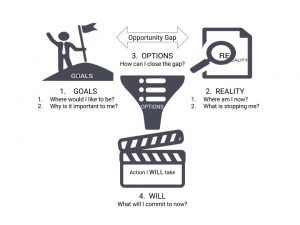 In this second article following our Rolls-Royce aspiring leaders developing skills in Bangladesh we major on motivation. In case you missed it, the first article is here.
In this second article following our Rolls-Royce aspiring leaders developing skills in Bangladesh we major on motivation. In case you missed it, the first article is here.
Last time we sought to understand why our clients had no customers as yet and we sent them to dig deeper into their prospective customers’ needs. The challenge can be be summarised as motivation, which was the key topic in this fortnight’s group call.
Whether you are in professional services or just trying to influence a colleague’s behaviour, building motivation to change is a key foundation for success. Tempting though it is to just leap in to solve the problem, earning the right has to come first. Some in positions of authority tend to assume the right by being the boss, forgetting that employment contracts cover time and diligence, not hearts and minds. Without authority, the need becomes more obvious and our Rolls-Royce consultants, after only a few sessions have not had the opportunity to deliver enough value to build trust.
So how do you build motivation?
One of the easiest ways to build motivation is a coaching technique called GROW. GROW explores the gap between Goals and Reality reinforcing the need to review which Options we exercise to move forward. The Will to take action shows the motivation. A vital part of our process is to define project objectives by the 3rd session. We do this partly to provide focus for the following sessions, but it also helps both consultants and clients to visualise the prize should the going get tough.
The Will to take action shows the motivation. A vital part of our process is to define project objectives by the 3rd session. We do this partly to provide focus for the following sessions, but it also helps both consultants and clients to visualise the prize should the going get tough.
Stretching the gap between ‘as is’ and ‘to be’ is a common professional services sales technique, which neatly explains our clients lack of customers. We had set a task to go and talk to prospective customers to explore their real needs. 2 customer scenarios came back and we discussed one, a shopkeeper that wanted to borrow money to increase stock. At first sight this seems very reasonable… except
How does more stock translate into more profit?
Accounting ratios show that more stock is bad because money tied up in stock is not working for you. What the customer really needs is more sales. More stock only helps if they are close to selling out of things. Armed with this key insight and a tool to increase sales, our clients have greater credibility and the following conversation should build some solid motivation. How much sales income do you want? (Goal) And how much have you got now? (Reality) And how about some help to close the gap? (Option) How else (will) you manage? Best of all, they are not selling, but coaching which always feel much better.
tied up in stock is not working for you. What the customer really needs is more sales. More stock only helps if they are close to selling out of things. Armed with this key insight and a tool to increase sales, our clients have greater credibility and the following conversation should build some solid motivation. How much sales income do you want? (Goal) And how much have you got now? (Reality) And how about some help to close the gap? (Option) How else (will) you manage? Best of all, they are not selling, but coaching which always feel much better.
Motivation needs context
Earning the right to help depends on the promise of a tangible outcome – something the customer can identify with needing. A business plan is simply not specific enough. Even doubling sales may not be sufficiently desirable to warrant the effort unless those extra sales enable something special like buying a house, sending kids to school or improved status. We return to this point here. One of the joys of having consultants as clients is we see things through 2 lenses. We see how to motivate our clients through helping them to motivate their customers. The similarities are striking and provide valuable insight into just what makes people tick.
Do customers know what they want?
Our shopkeeper example highlights another misconception. He thought borrowing money for more stock was the solution, when what he really needed was more sales. This is surprisingly common. Perhaps we shouldn’t ask the customer? What this shows is that we need to know why rather than what. We need to probe that little bit deeper in our conversations to understand the true motivation – the desired outcome. Customers often latch on to the first problem and don’t always know what is possible. If they did, they wouldn’t need us.
It is surprising just how much you can learn from an hour on Skype!

[…] Motivation for rapport and entrepreneurial success […]